By: Andrew K. Bobo and Andrew J. Patton
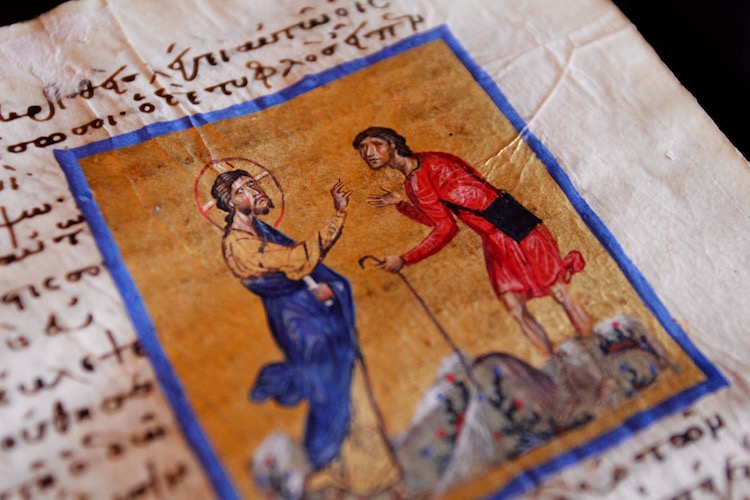
The Center for the Study of New Testament Manuscripts (CSNTM) Digital Library contains hundreds of Greek NT manuscripts, each with its own story to tell. In our “From the Library” series, we will feature individual manuscripts from our collection in order to showcase their unique beauty and importance. This is part of CSNTM’s mission to make NT manuscripts accessible for everyone.
Throughout our recent expedition to the National Library of Greece in Athens, we encountered an incredible variety of NT manuscripts. One of the most beautiful among these was an illuminated Gospels manuscript catalogued by NT scholars under the designation GA 777. Scholars have classified this as a minuscule manuscript because it is written in the cursive handwriting typical of the late medieval era. The manuscript is a complete Tetraevangelion, a manuscript containing all four Gospels.
Evangelist Icons
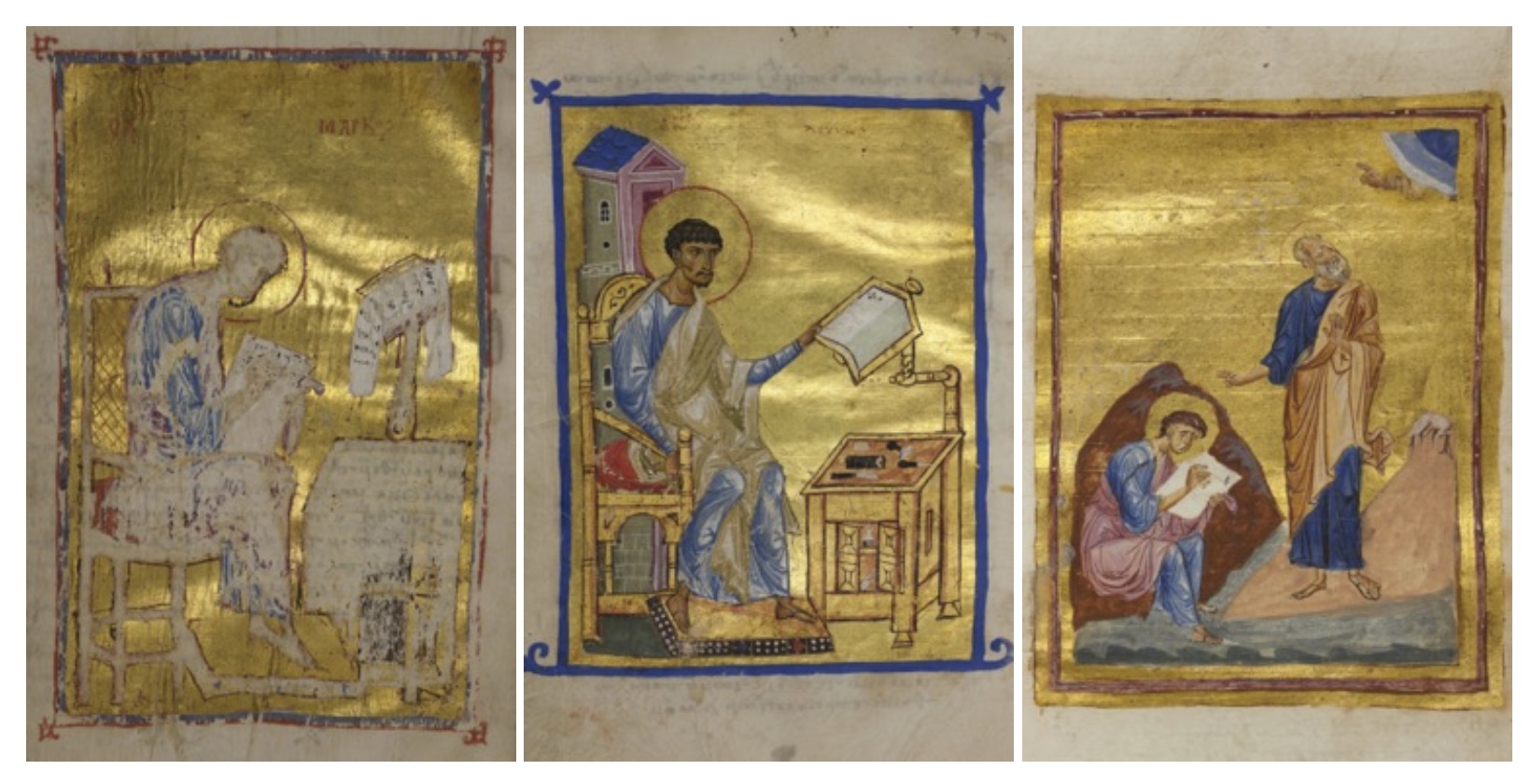
Evangelist icons of Mark, Luke, and John in GA 777
This manuscript boasts wonderful artistry, with almost two-dozen icons of scenes from the Gospels. It is common for Greek NT manuscripts to include full-page icons of the four evangelists—Matthew, Mark, Luke, and John—before the beginning of his Gospel. This manuscript does not disappoint. It contains stunning gilded icons of Mark, Luke, and John. (Thieves may have cut out the icon of Matthew or that leaf came apart from the codex, being at the front of the book.) As you can see, the gold leaf applied to these works of art has been remarkably well preserved, even as the paint chipped away on Mark’s image. The icon of John is particularly interesting: John is seen dictating his Gospel to Prochoros, his scribe, as instructed by the Holy Spirit, from a cave on the island of Patmos.
Narrative Icons
While the evangelists’ icons are common, narrative icons that illustrate events in the text are rare. This manuscript is notable because it contains so many of them! In breathtaking detail, they depict famous scenes including Jesus healing the blind, his encounter with the Samaritan woman, and his crucifixion. Here, we will showcase four, but you can visit the manuscript’s page on CSNTM’s website to see the whole collection.
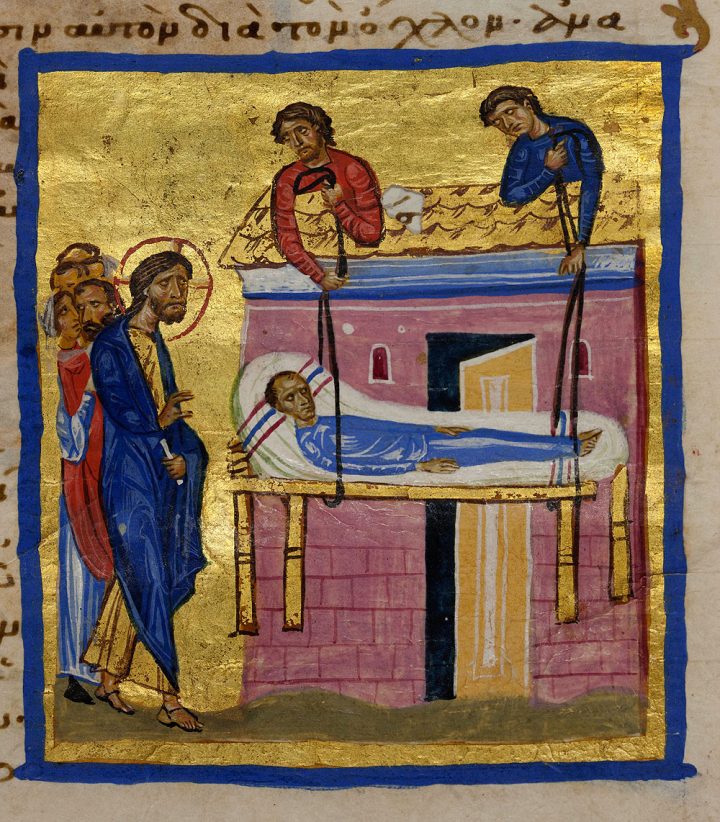
Jesus Heals the Lame Man
This beautiful icon depicts one of the most memorable stories in the Gospels when Jesus healed the paralytic who was lowered through the roof of a house while he was teaching (Luke 5:17–26).
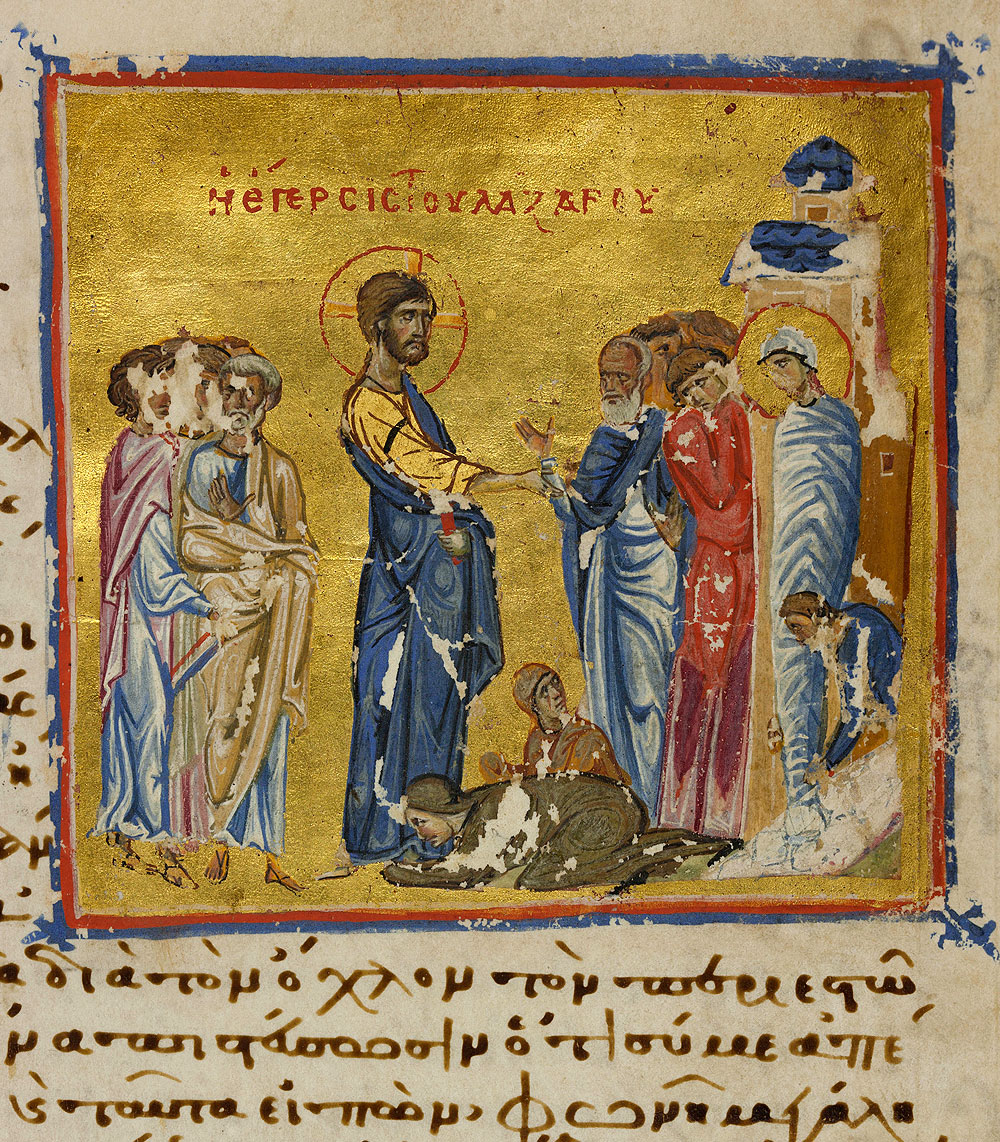
Jesus Raises Lazarus from the Dead
This icon depicts Jesus raising Lazarus from the dead (John 11:38–44). Mary and Martha—Lazarus’s sisters—are shown mourning at the feet of Jesus, while Lazarus is wrapped in burial linens. This icon is especially unique because it includes a title.
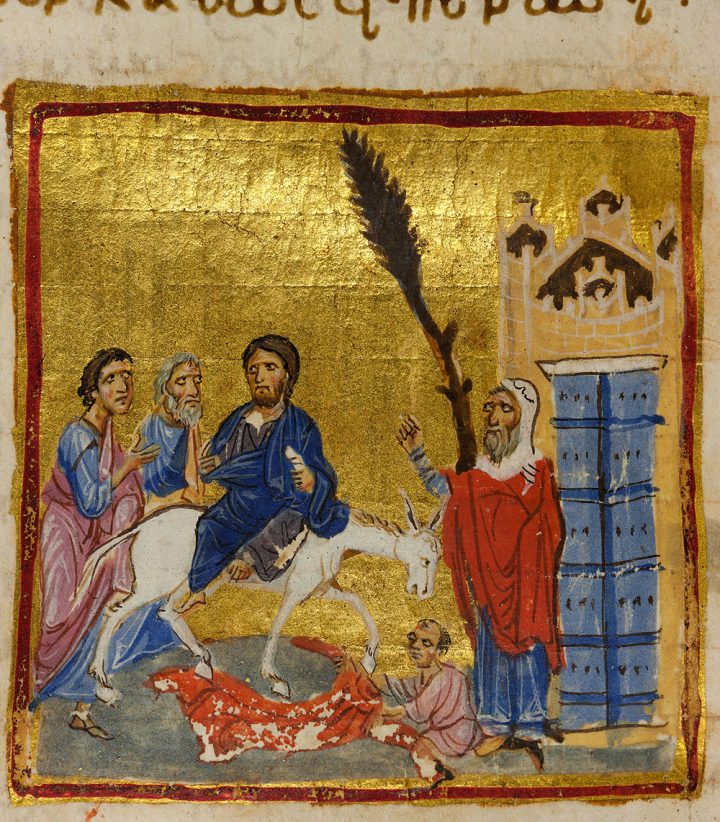
The Triumphal Entry
This icon from the Gospel of Luke shows Jesus’ triumphal entry into Jerusalem (Luke 19:28–44). Visual details from the text are illustrated, including Jesus riding on a donkey and the crowd laying coats across the path.
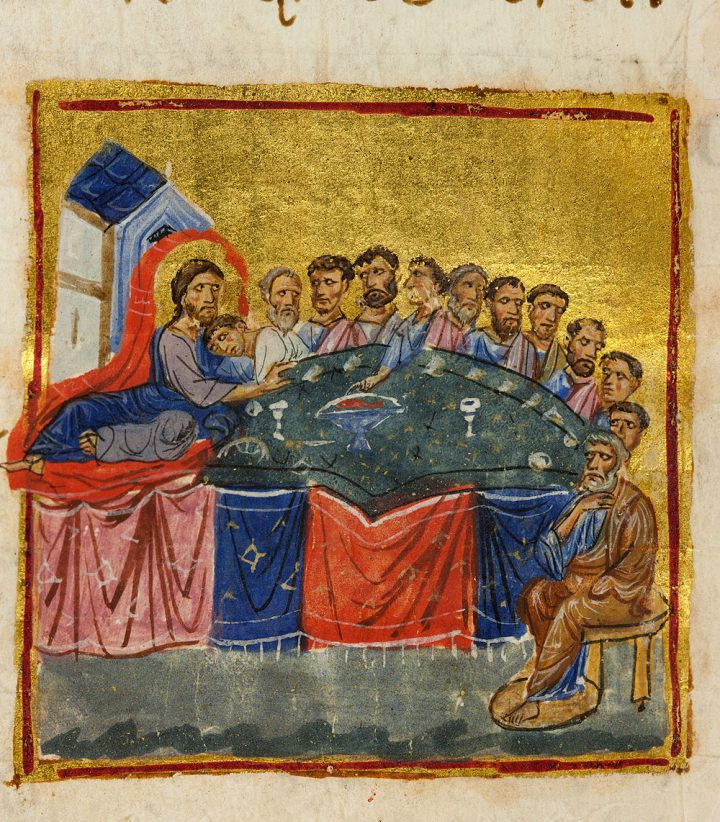
The Last Supper
This magnificent icon illustrates the Last Supper in Luke (Luke 22:7–38). Jesus is shown reclining at the table with his twelve disciples. It is interesting that this artist chose to place the disciples at a round table unlike da Vinci’s famous painting of the Last Supper; it comes closer to the truth of the real shape of the table. This image is much older than da Vinci’s masterpiece, which was painted in 1498.
Superior Preservation
GA 777 dates from the twelfth century. For a book more than 800 years old, she is still in excellent shape! The scriptures are written on thin vellum, which is actually more fragile than ordinary parchment. Yet, it has not been damaged like other manuscripts even from the same time period.
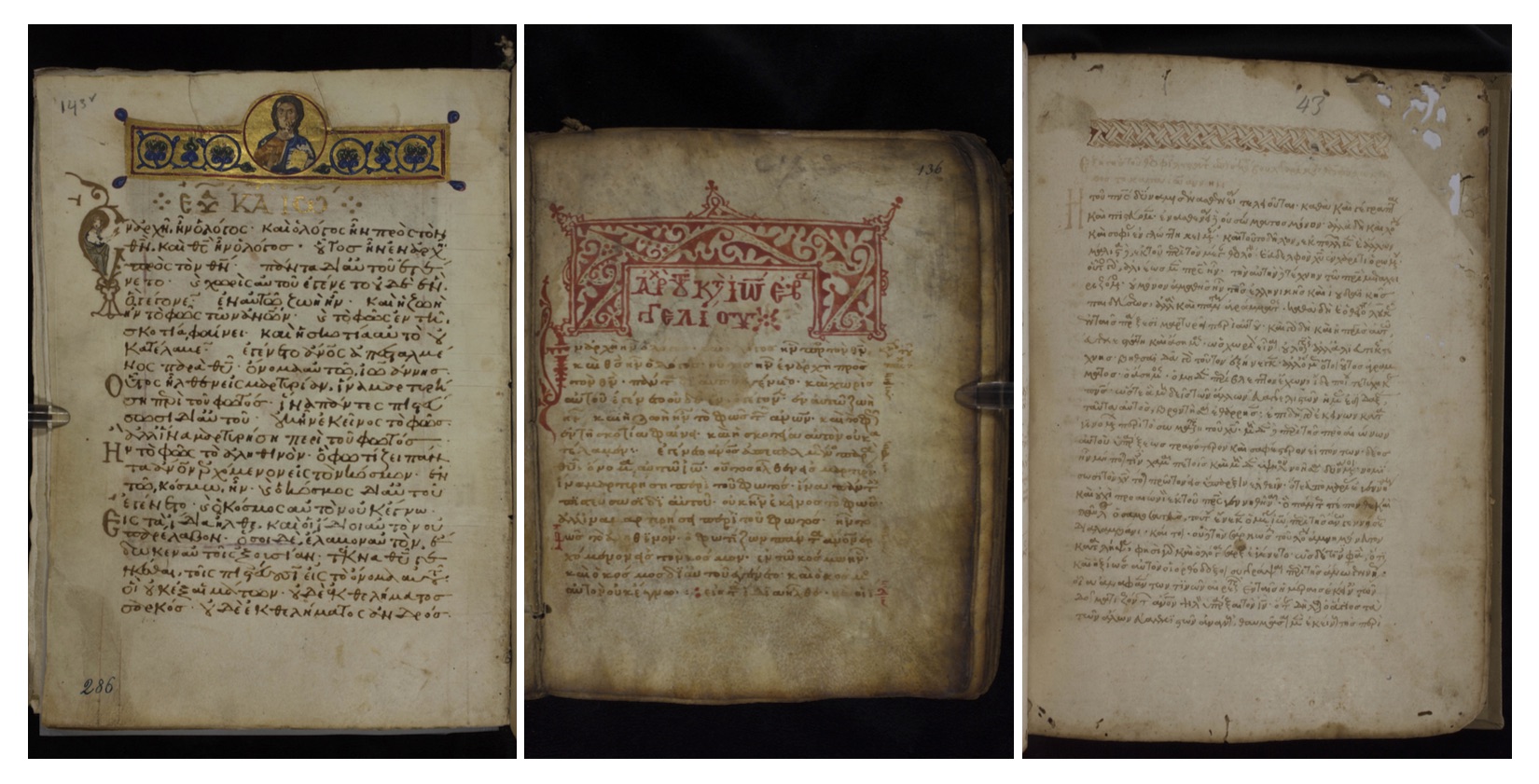
As a comparison, here is the introduction to John in three manuscripts. On the left is GA 777. In the middle is another manuscript from the same century, also on parchment, but with some browning along the edges (perhaps due to being near a fire at some point in its history). On the right, this manuscript is about two hundred years younger. However, it is written on paper, and has some damage from silverfish and worms which ate through the edges of the page. These other manuscripts are still very well preserved! GA 777, though, stands apart as a magnificent specimen of a Byzantine biblical manuscript.
This Gospels manuscript is a unique treasure in the collection of the National Library of Greece, a collection that CSNTM digitized over the last two years. While there are many common patterns in every manuscript, each one contains distinctive features that make them fascinating to examine. We are delighted to have had the privilege of studying and digitizing this treasure so that it can be shared with you. If you would like to view the manuscript in its entirety, visit its page in CSNTM’s Digital Library.
